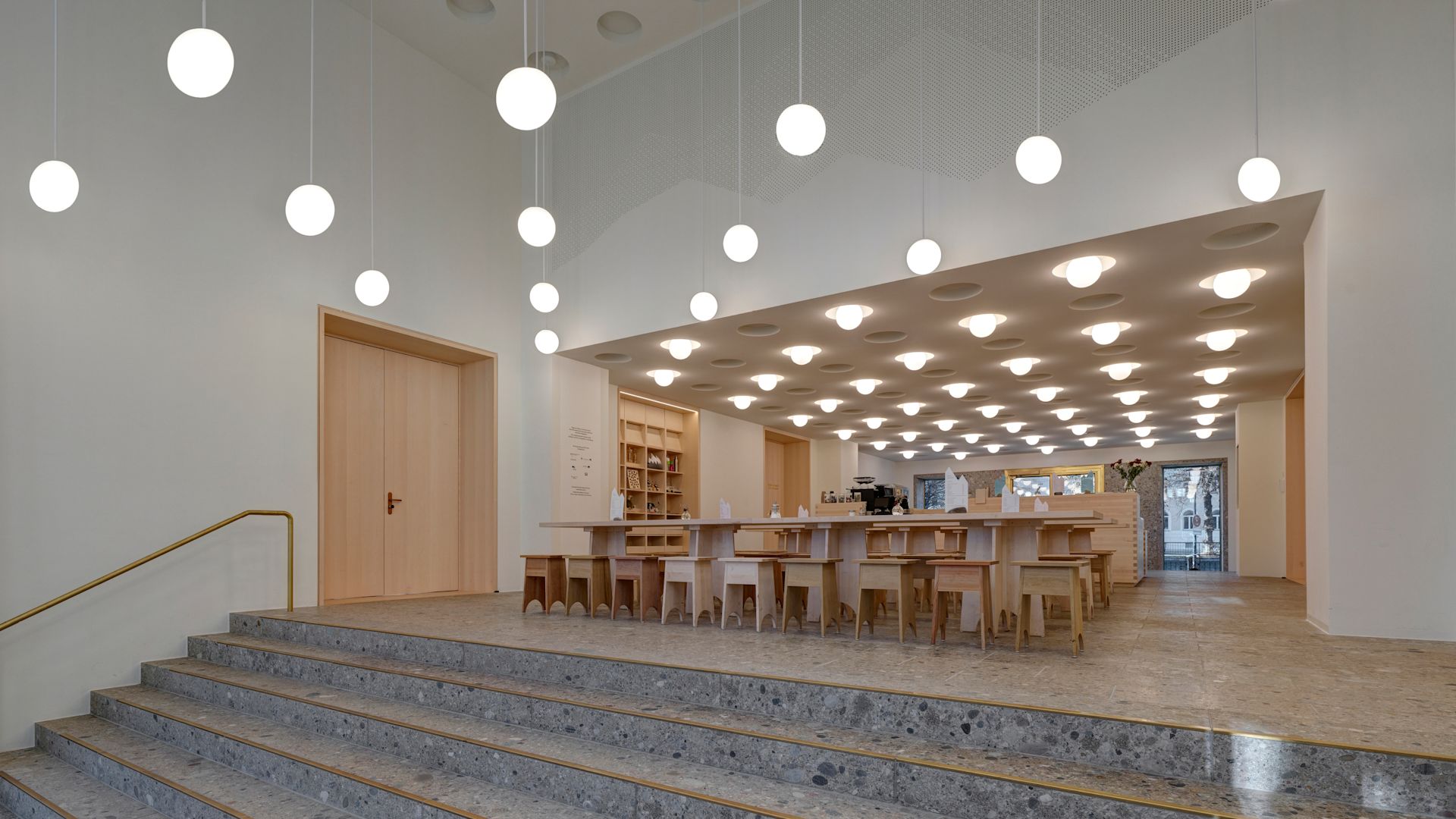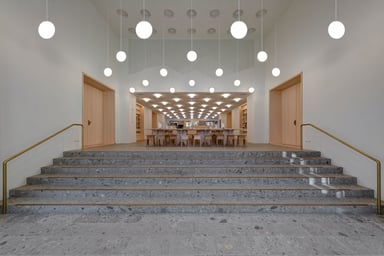
As a lively place of encounter and exchange, the Alpine Museum on Munich's Prater Island has always been dedicated to the history of mountaineering. After three years of renovation, the traditional museum now features enhanced accessibility and a thoughtful lighting concept that harmoniously blends historical architecture with modern usage requirements. BEGA luminaires create targeted accents and a warm, inviting ambience.
Mountain enthusiasts have gathered on Munich's Prater Island since 1911. That year, the German Alpine Club (DAV) Museum first opened its doors at Café Isarlust, which forms part of the Neo-Rococo manor located on the island. Over a century later, this historic site was carefully renovated under the direction of the Regensburg-based Feil architectural firm, with a total budget exceeding 10 million euros. The focus was on preserving the historical character while modernising the available space. A new foyer with a café and museum shop was created, the world's largest alpine library was relocated to the ground floor, and all areas were made wheelchair accessible. Key aspects of the redesign included hospitality, connectivity, and sustainability. The architects intentionally opened the facade with large, inviting windows facing the city centre, while creating seamless transitions between the exhibition, library, and event spaces. Regional woods and resource-saving technologies were used in the material selection.
Lighting design played a central role in the overall concept, with the deliberate selection of BEGA luminaires. They highlight the historical building substance and enable a balanced interplay between function and atmosphere. In the foyer and library, white BEGA ceiling and wall luminaires are used. Their satin matt glass globes produce soft, even light that warmly accentuates the wood panelling and bookshelves. With their hand-blown opal glass, these unshielded indoor luminaires prevent glare and create a calm working environment – perfect for the new library with its inviting beanbags and cabin furniture. Unshielded BEGA ceiling and wall luminaires were also placed on the walls of corridors and stairwells, as well as the ceilings of the seminar rooms in the basement. Here, however, flat, plate-shaped luminaire versions were used. They offer a pleasantly glare-free light solution and combine practicality with decorative appeal.

As a nod to the founding era, the museum café still bears the name “Isarlust”. And just like back then, the café serves as a place of rest and social interaction. The lighting concept underscores this idea: BEGA ceiling luminaires are complemented by matching BEGA pendant luminaires to form a harmonious whole. While the softly glowing opal glass ceiling luminaires bathe the room in warm, diffuse light, the spherical pendant luminaires create targeted accents. They hover above the wooden tables for focused yet unobtrusive illumination. They visually structure the room and simultaneously create an inviting atmosphere for relaxed and communicative moments before, during, or after a visit to the museum. In their totality, the various BEGA luminaires at the Alpine Museum create a coherent overall picture with high eye comfort. At the same time, the durable LED luminaires significantly reduce the museum's energy consumption, contributing to one of the most important objectives of the renovation project: responsible resource management.
Client Alpines Museum des Deutschen Alpenvereins e.V.
Architects Feil Architekten, Munich
Construction management Uns Architektur, Munich















